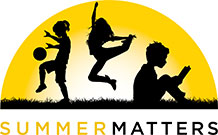Summer Learning Planning Timeline
January 21, 2016
Bringing your summer learning program to life takes commitment, energy and planning. Our Summer Learning Planning Timeline provides a clear structure you can follow to get your program off the ground.
The timeline includes when you should begin planning steps such as setting goals, planning curriculum, and hiring staff. The planning timeline is aligned with the National Summer Learning Association’s quality standards for program management and operation.
*(#s) = Indicators from CASP tool
November – March
Gather stakeholders’ (youth, families, school faculty, CBOs, district leadership) input on their hopes and needs for the summer program (1; 24; 53-54)*
- Develop a planning team (12-13; 17; 23; 24; 29; 45)
- Develop and/or review Youth Learning Goals (3; 5-7 data)
- Assess required resources :
- Funding – How much, who, MOU/contract (14-15; 39; 47-48)
- Enrollment – How many, who, when, needed daily attendance (2; 10)
- Location – Where, cost, requirements, MOU/contract (47; 79)
- Schedule – Hours, daily, weekly, fieldtrip (19; 20; 22; 28; 30-32; 51)
- Staffing and Providers – How many, who, cost – trainings, meetings, prep,(before, during and after program) and direct service hours (18; 33-43)
- Supplies – food, materials, transportation (21; 56; 80)
- Create and/or find curriculum that connect to Youth Learning Goals, program theme, and culture (23-28;53-77)
March – May
- Create and/or find curriculum that connect to Youth Learning Goals, program theme, and culture (23-28;53-77)
- Recruit Students (2)
- Hire new staff and/or identify returning summer staff (33-34)
- Intensive summer training begins (35-37)
May – July
- Summer program begins
- Weekly check-in meetings with staff (40)
- Facilitate in-service staff trainings (42-43)
- Assess and debrief the overall quality of the summer program (include input from stakeholders such as staff, youth, parents…) (4; 41)



